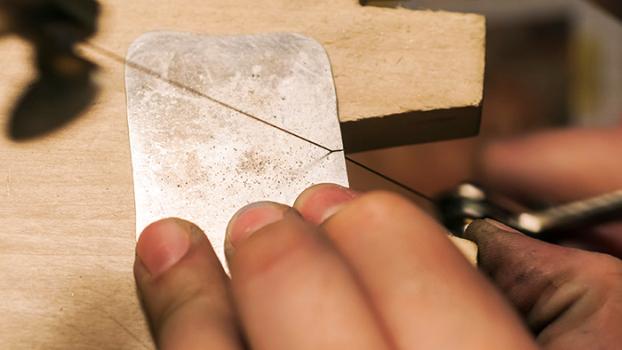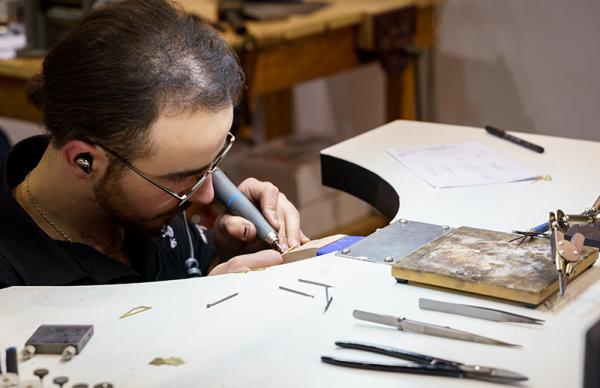
Silversmith
Silversmiths design and make silver jewellery, including jewellery with precious and semi-precious stones. This may involve cutting, filing, hammering, turning, spinning, bending and casting silver or other metals. They may use different methods to secure stones and engrave jewellery. They may also make other small silver objects such as containers and ornaments. They may repair or remodel jewellery and sell jewellery to the public. They may work making pieces for commission, for a jeweller or mass producing pieces.
Working conditions
A silversmith would normally work 38 hours per week, Monday to Friday in air-conditioned rooms. Some silversmiths work on Saturdays. Silversmiths who are self-employed or create jewellery for commission may work longer hours.
Tools and technologies
Silversmiths need to be able to use tools, often very fine and specialised, for casting, bending, cutting and spinning gold and other metals. They may also need to use specialised lathes and tools for grinding and finishing silver jewellery.
Education and training
To become a silversmith you usually need to undertake a jeweler apprenticeship. The apprenticeship usually takes 48 months to complete and is available as a school-based apprenticeship.
The Certificate IV in Design (Jewellery Studio), the Diploma of Visual Arts (Jewellery Design), the Diploma of Visual Arts and the Advanced Diploma of Visual Arts are offered at TAFE colleges throughout Western Australia. Browse courses through Jobs and Skills WA and search on the My Skills website to find a registered provider near you.
You can also gain a qualification in design, visual arts or a related area.

Free support and assistance
Your local jobs and Skills Centre can provide free information, support and assistance to help you decide on the best training options to meet your goals.
Disclaimer
The information presented on the occupation profiles within this website is offered as a guide only.


